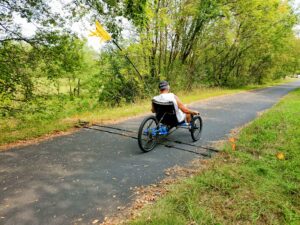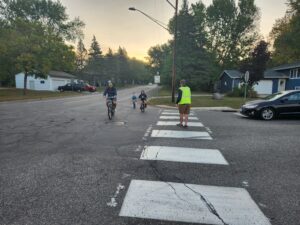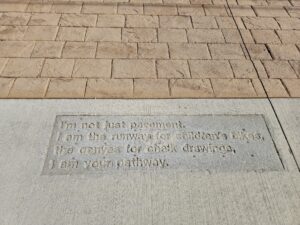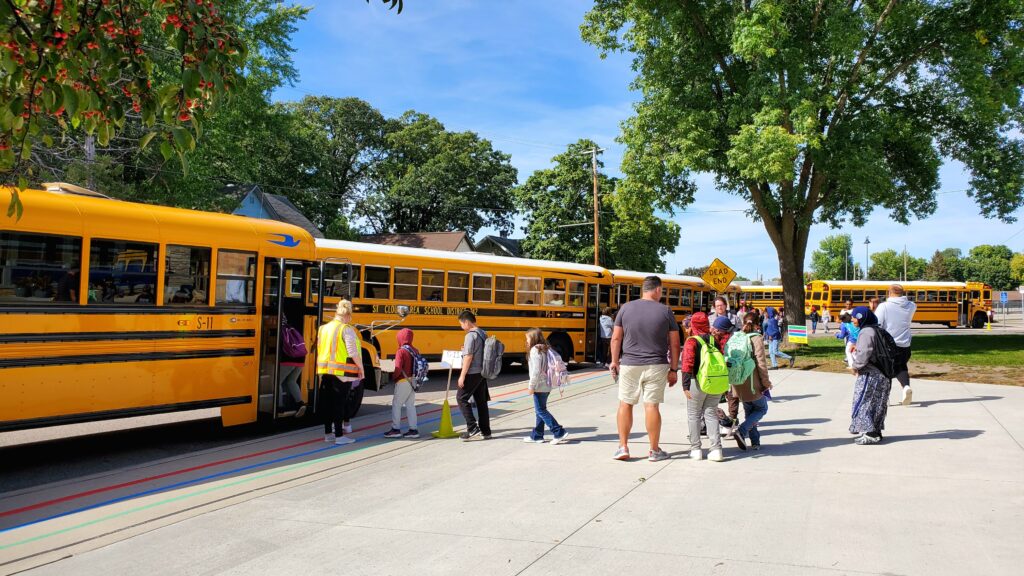Overview
During the development of the APO’s MAPPING 2045 Metropolitan Transportation Plan (MTP), the APO identified the need to create specific modal plan pertaining strictly to active transportation. Shortly after the conclusion of that planning process (in 2019), APO staff began work to develop its first Regional Active Transportation Plan. The Regional Active Transportation Plan provides a closer look at the specific — and sometimes unusual — opportunities and barriers individuals face when it comes to safely and effectively using this mode of transportation. Ultimately, the outcome of this plan is to identify specific projects and/or policies that will help improve the active transportation environment throughout the region and facilitate convenient and safe trips for all users of all abilities to reach their desired destinations.
The APO’s Regional Active Transportation Plan was formally approved by the Policy Board on Sept. 9, 2022.
It should be noted that this planning effort is considered a sub-component of the MTP — meaning the outcomes and recommendations of this plan help inform the direction of our long-range, multimodal, surface transportation plan.
Download the Regional Active Transportation Plan (PDF)
In addition to the full Regional Active Transportation Plan, the APO has also created specific “mini” plans for the five major cities within the APO’s planning boundary. Click on the links below to view jurisdictional-specific active transportation plans.
What is Active Transportation?
Active transportation refers to any form of human-powered transportation such as walking, bicycling, skateboarding, rollerblading, electric bikes/electric scooters, and using mobility assistive devices like wheelchairs. Active transportation also encompasses those who use transit services since every transit trip begins and ends using some form of active transportation (arriving to and leaving a bus stop).
Active transportation serves multiple purposes. First, active transportation is a relatively inexpensive form of transportation. According to the U.S. Department of Transportation, people living in low-income areas tend to own fewer vehicles, have longer commutes, have higher transportation costs, and are more likely to be injured or killed on the road. Investment in active transportation infrastructure provides individuals with affordable transportation options to safely and conveniently connect them to essential destinations such as work, school, grocery stores, medical centers, and even transit stops. As a result, this mode of transportation provides accessible mobility options for all people, regardless of income, ability, or age.
Second, it is well documented the importance active transportation plays in terms of public health. Frequent use of active transportation modes promotes physical activity and healthy lifestyles — reducing the risk of chronic diseases and premature death. Access to sidewalks and shared use paths can serve as a way to encourage more physical activity and improving mental health and quality of life.
Finally, the increase of active transportation — in particular, replacing vehicle trips with walking/biking trips — can also play a role in reducing greenhouse gas (GHG) emissions. In Minnesota, the transportation sector is the state’s largest source of GHG emissions, accounting for about one-quarter of all GHG emissions according to a 2023 legislative report. Investment in active transportation infrastructure as well as increases in the use of active modes, can serve as a means to support various climate action initiatives.
Safe Routes to School
In addition to the APO’s Regional Active Transportation Plan, APO staff have worked (or are currently working) with area school districts to develop Safe Routes to School (SRTS) plans for students in grades K-8. SRTS planning is an effort to improve walking and bicycling conditions for youth and to encourage more active lifestyles.
For more information on past SRTS planning efforts, check out the Safe Routes to School Plans page.
To learn more about current SRTS planning efforts and how to get involved, visit the SRTS Planning Efforts page.
Active Transportation Resources
Interested in learning more about active transportation? Check out the resources below!







